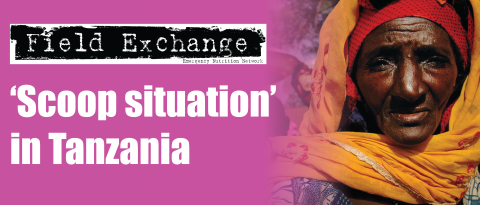Livestock Feeding Support as Drought Response
Summary of research1

A sick cow and a shepherd boy in Ab'Ala Afar Region
A livelihoods-based drought response in pastoralist areas could aim to protect key livestock assets and support rapid rebuilding of herds after drought. One aspect of developing such a response requires decision makers to understand the relative importance of different causes of livestock mortality during drought.
Research conducted by the Pastoralist Livelihoods Initiative in Afar, Borana and Somali areas of Ethiopia aimed to quantify different causes of livestock mortality during 'normal' and 'drought' years (see Table 1). These figures show that:
- Most of the excess livestock mortality recorded in drought years is caused by starvation.
- Disease is an important cause of mortality in both normal years and drought years, indicating weaknesses in veterinary services in both situations (disease-related mortality does not always increase during drought).
| Table 1 Livestock leaving pastoralist herds in normal and drought years | ||||||
| Reason for off-take or loss from herd | Afar herdst | Borana herds | Somali herds | |||
| Normal year | Drought year | Normal year | Drought year | Normal year | Drought year | |
| Starvation | 0% | 19.5% | 0.7% | 13.1% | 0% | 15.5% |
| Disease | 10.1% | 16.7% | 12.5% | 11.9% | 12.6% | 7.3% |
| Sale | 6.0% | 6.5% | 8.4% | 8.5% | 7.0% | 5.1% |
| Slaughter | 0.6% | 0.4% | 1.7% | 1.8% | 4.1% | 3.1% |
| Predation | 4.7% | 5.1% | 6.8% | 6.1% | 6.1% | 4.6% |
| Other | 6.1% | 5.3% | 7.0% | 6.2% | 2.9% | 1.2% |
| Total | 27.5% | 53.5% | 37.1% | 47.6% | 32.7% | 39.8% |
Evidence from Pastoralist Livelihood Initiative (PLI) impact assessments in southern Ethiopia showed that when some livestock were destocked, pastoralists chose to use part of the resulting income on both animal feed support (up to 31% of income) and veterinary care (6% of income). This pattern of investment contrasted with a typical aid response for livestock during drought, which focuses heavily on veterinary treatments or vaccinations.
An analysis of supplementary livestock feeding programmes in northern Kenya in 2001 assumed that feed was provided for 8000 sheep and goats for three months during drought. Each animal was fed 250g concentrate/day. The cost was compared with the cost of replacing these animals by restocking after the drought. Whereas the feed programme cost US$82,353, the restocking would have cost US$258,065 - it was around three times more expensive to restock than to keep sheep and goats alive during the drought through feed supplementation.
A theoretical analysis of feed, transport, operational and administration costs for delivering feed in Afar region found that restocking sheep and goats cost around 6.5 times more than supplementary feeding. Restocking cattle costs 14 times more than supplementary feeding.
The PLI research highlighted a number of key policy and programming issues:
- The livelihoods objective of supplementary feeding is to protect a core herd of breeding animals, and encourage post-drought recovery. This requires participatory assessment with pastoralists to agree on the composition and size of core breeding herds before drought occurs.
- Supplementary feeding is not a stand-alone intervention - it should be part of an overall drought cycle management approach that combines early de-stocking and preventive veterinary care. However, in terms of proportional investments in different types of livestock intervention, far more investment should be made in supplementary feeding and this investment should probably exceed expenditure on veterinary care.
- Feeding can start during the alarm phase of a drought with high energy, high fat and high protein concentrates - this is very cost-effective compared to restocking after drought. Some roughage, such as hay, may also be needed.
- Maintaining drought-stricken herds on roughage alone may not be very effective as weakened animals cannot regain body weight and strength in a short time to cope with the situation. Hay is also relatively expensive to transport due to its physical bulk.
- Optimal feed provision in pastoral areas should be planned for a maximum of three months at a time, as most droughts (or the need for additional feed from outside) do not last longer than that.
- In normal periods, agencies need to assume that livestock feed purchase and distribution will be required in the next drought. Procurement and transport costs need to be anticipated, and reliable sources of feed identified. This type of planning will assist rapid buying and distribution of feed.
1Pastoralist Livelihoods Initiative (2007). Food for Thought: Livestock Feeding Support during Drought. Policy Brief, Number 2, November 2007
Imported from FEX website


